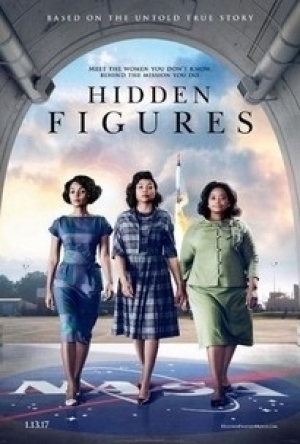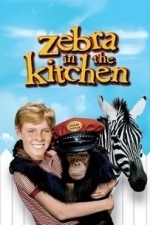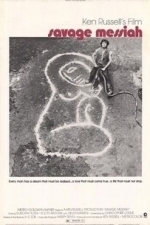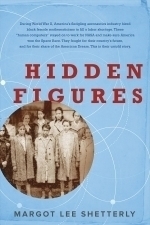Search

Hidden Figures (2016)
Movie Watch
A team of three African-American women prove their skills as mathematicians and engineers at NASA...
Katherine Johnson Dorothy Vaughan Mary Jackson Project Mercury
Suswatibasu (1703 KP) rated Hidden Figures: The Untold Story of the African-American Women Who Helped Win the Space Race in Books
Oct 27, 2017 (Updated Oct 27, 2017)
So much more than the film
I'm so glad that I watched the film first, otherwise it would have been a total disappointment. The book is extensive, and the story of the film seems quite different to the truth. The bare bones are the same: a trio of remarkable women broke boundaries in both gender and race to be part of one of the most historic events in US and even world history - the space race.
Before John Glenn made it to space, a group of professionals worked as ‘Human Computers’, calculating the flight paths by hand that would enable these historic achievements. Among these were a coterie of bright, talented African-American women. Forget Silicon Valley's misogynistic climate - women were the original engineers and mathematicians.
The book is awash with interesting stories of extraordinary people working in a time of segregation and all pervasive racism. It has multiple layers that delve into each character, and gives a comprehensive context into these women's lives. It basically fills in the gaps of the film, but also changes the timeline considerably as Katherine Johnson was much younger than her colleague Dorothy Vaughan. Nevertheless, an extraordinary read and a great tribute to these invisible women.
Before John Glenn made it to space, a group of professionals worked as ‘Human Computers’, calculating the flight paths by hand that would enable these historic achievements. Among these were a coterie of bright, talented African-American women. Forget Silicon Valley's misogynistic climate - women were the original engineers and mathematicians.
The book is awash with interesting stories of extraordinary people working in a time of segregation and all pervasive racism. It has multiple layers that delve into each character, and gives a comprehensive context into these women's lives. It basically fills in the gaps of the film, but also changes the timeline considerably as Katherine Johnson was much younger than her colleague Dorothy Vaughan. Nevertheless, an extraordinary read and a great tribute to these invisible women.
Gareth von Kallenbach (980 KP) rated Hidden Figures (2016) in Movies
Jul 12, 2019
Teaching courses on history and the relevance of film capturing historical periods, people, and themes offers me a little greater perspective when watching historically based films. I think about how much I should criticize the film based on the ways that the truths are stretched in order to placate their audiences so that they don’t feel to uncomfortable with the subject matter. Hidden Figures offers up a chance to expose American audiences to a period and historical figures that helped impact American history and allow successful space flight.
Hidden Figures discusses the contributions of African-American women at NASA — Katherine Johnson (Taraji P. Henson), Dorothy Vaughan (Octavia Spencer) and Mary Jackson (Janelle Monáe). The film is enlightening and allows for audiences to gain a greater understanding of women and women of color in ensuring the success of the American Space program. The film does not exaggerate circumstances to a point where it is difficult to believe. What is difficult to believe for audiences in using this film to look at the past is that we have waited so long to recognize and honor these heroes. Without their contributions, the United States may have never made it to the moon.
The film offers adults and youth audiences an honest look into what these women faced in the forms of racism and sexism. There is no brutality of racism or violence demonstrated, but the spectre of it lingers over the film and reminds the viewer of the hardships that these women faced. They had the minds to carry out their tasks, but they did not have the right gender or color to be taken seriously, at first. The film is empowering and allows for young girls, despite race, to see that science and math are not fields that are not limited to men. Appropriate representation allows for more depth to history and the role that people of different walks, faiths, and nationalities have played in society. Hidden Figures is a timely film that allows for greater representation and may push filmmakers and audiences to discover more hidden figures in history.
Hidden Figures discusses the contributions of African-American women at NASA — Katherine Johnson (Taraji P. Henson), Dorothy Vaughan (Octavia Spencer) and Mary Jackson (Janelle Monáe). The film is enlightening and allows for audiences to gain a greater understanding of women and women of color in ensuring the success of the American Space program. The film does not exaggerate circumstances to a point where it is difficult to believe. What is difficult to believe for audiences in using this film to look at the past is that we have waited so long to recognize and honor these heroes. Without their contributions, the United States may have never made it to the moon.
The film offers adults and youth audiences an honest look into what these women faced in the forms of racism and sexism. There is no brutality of racism or violence demonstrated, but the spectre of it lingers over the film and reminds the viewer of the hardships that these women faced. They had the minds to carry out their tasks, but they did not have the right gender or color to be taken seriously, at first. The film is empowering and allows for young girls, despite race, to see that science and math are not fields that are not limited to men. Appropriate representation allows for more depth to history and the role that people of different walks, faiths, and nationalities have played in society. Hidden Figures is a timely film that allows for greater representation and may push filmmakers and audiences to discover more hidden figures in history.


